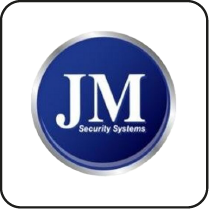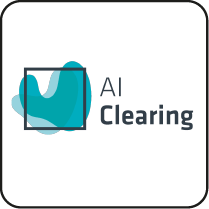ISO 14001 and Sustainability
What is ISO 14001 and its Purpose?
ISO 14001 is an international standard for Environmental Management Systems (EMS). Its purpose is to provide organisations with a framework to protect the environment, respond to changing environmental conditions, and integrate environmental management into their business processes. This standard helps organisations improve their environmental performance through more efficient use of resources and reduction of waste.
How Does ISO 14001 Contribute to Sustainability?
ISO 14001 contributes to sustainability by promoting practices that reduce environmental impact and enhance resource efficiency. By implementing an EMS, organisations can systematically manage their environmental responsibilities, ensuring compliance with regulations and fostering a culture of continuous improvement. This alignment with sustainable practices helps organisations minimise their ecological footprint and contribute to long-term ecological balance.
What are the Key Principles of ISO 14001?
The key principles of ISO 14001 include:
- Environmental Policy: Establishing a policy that reflects the organisation’s commitment to environmental protection and compliance with legal requirements (Clause 5.2).
- Planning: Identifying environmental aspects, compliance obligations, and risks and opportunities to set objectives and plan actions (Clause 6.1).
- Implementation and Operation: Establishing processes and controls to achieve environmental objectives and manage significant environmental aspects (Clause 8.1).
- Performance Evaluation: Monitoring, measuring, and evaluating environmental performance to ensure continual improvement (Clause 9.1).
- Improvement: Taking corrective actions to address nonconformities and continually improving the EMS (Clause 10.2).
How Does ISO 14001 Align with Sustainable Development Goals?
ISO 14001 aligns with Sustainable Development Goals (SDGs) by promoting responsible consumption and production (SDG 12), climate action (SDG 13), and life on land (SDG 15). By integrating these goals into their EMS, organisations can contribute to global sustainability efforts and demonstrate their commitment to environmental stewardship.
Introducing ISMS.online and How It Helps
ISMS.online is a comprehensive platform that supports organisations in implementing and maintaining ISO 14001 compliance. It offers tools for risk management, document control, and performance monitoring, ensuring that organisations can efficiently manage their EMS. By using ISMS.online, businesses can streamline their environmental management processes, enhance compliance, and drive continuous improvement.
Book a demoKey Components of ISO 14001
Main Elements of an Environmental Management System (EMS)
An Environmental Management System (EMS) under ISO 14001 comprises several critical elements designed to enhance environmental performance. These include:
- Environmental Policy: A formal declaration of the organisation’s commitment to environmental protection and compliance with legal requirements (Clause 5.2).
- Planning: Identifying environmental aspects, compliance obligations, and risks and opportunities to set objectives and plan actions (Clause 6.1).
- Implementation and Operation: Establishing processes and controls to achieve environmental objectives and manage significant environmental aspects (Clause 8.1).
- Performance Evaluation: Monitoring, measuring, and evaluating environmental performance to ensure continual improvement (Clause 9.1).
- Improvement: Taking corrective actions to address nonconformities and continually improving the EMS (Clause 10.2).
Plan-Do-Check-Act (PDCA) Cycle in ISO 14001
The PDCA cycle is a core framework in ISO 14001, ensuring systematic and continuous improvement:
- Plan: Establish environmental objectives and processes necessary to deliver results in accordance with the organisation’s environmental policy (Clause 6.1).
- Do: Implement the processes as planned (Clause 8.1).
- Check: Monitor and measure processes against the environmental policy, objectives, and compliance obligations, and report the results (Clause 9.1).
- Act: Take actions to continually improve the EMS (Clause 10.2).
Documentation and Record-Keeping Requirements
ISO 14001 mandates comprehensive documentation and record-keeping to ensure transparency and accountability:
- Documented Information: Maintain documented information to support the operation of the EMS and retain evidence of its effectiveness (Clause 7.5).
- Control of Documents: Ensure documents are adequately controlled, including their creation, updating, and distribution (Clause 7.5.3).
Addressing Compliance Obligations
Compliance with environmental laws and regulations is a fundamental aspect of ISO 14001:
- Compliance Obligations: Identify and have access to applicable legal requirements and other obligations related to environmental aspects (Clause 6.1.3).
- Evaluation of Compliance: Regularly evaluate compliance with these obligations and take action if necessary (Clause 9.1.2).
By integrating these components, organisations can effectively manage their environmental responsibilities and drive sustainable practices.

An 81% Headstart from day one
We’ve done the hard work for you, giving you an 81% Headstart from the moment you log on. All you have to do is fill in the blanks.

Benefits of Implementing ISO 14001
Environmental Benefits of ISO 14001 Certification
ISO 14001 certification drives significant environmental improvements. Organisations can systematically reduce waste, minimise emissions, and enhance resource efficiency. By identifying and managing environmental aspects, businesses can mitigate their ecological footprint and contribute to global sustainability efforts (Clause 6.1.2).
Organisational Efficiency Improvements
Implementing ISO 14001 enhances organisational efficiency by streamlining processes and fostering a culture of continuous improvement. The Plan-Do-Check-Act (PDCA) cycle ensures that environmental objectives are systematically planned, executed, monitored, and refined, leading to more efficient operations and reduced environmental impact (Clause 9.1).
Financial Advantages of ISO 14001 Compliance
ISO 14001 compliance offers financial benefits through cost savings and improved operational efficiency. By reducing waste and energy consumption, organisations can lower operational costs. Additionally, compliance with environmental regulations can prevent costly fines and legal issues, further safeguarding financial stability (Clause 6.1.3).
Enhanced Corporate Reputation and Stakeholder Trust
Achieving ISO 14001 certification enhances corporate reputation and builds stakeholder trust. Demonstrating a commitment to environmental management and sustainability can attract environmentally conscious customers, investors, and partners. Transparent communication and stakeholder engagement foster trust and loyalty, contributing to long-term business success (Clause 7.4).
By integrating ISO 14001, organisations not only meet regulatory requirements but also position themselves as leaders in sustainability, driving both environmental and economic benefits.
Lifecycle Thinking in ISO 14001
What is Lifecycle Thinking and Why is it Important?
Lifecycle thinking involves evaluating the environmental impacts of a product or service from its inception to its end-of-life. This holistic approach ensures that all stages—from raw material extraction to disposal—are assessed for their environmental footprint. By adopting lifecycle thinking, organisations can identify opportunities to reduce negative impacts and enhance sustainability throughout the product’s lifecycle.
How Does ISO 14001 Incorporate Lifecycle Perspectives?
ISO 14001 integrates lifecycle perspectives by requiring organisations to consider the environmental aspects and impacts associated with each stage of their products or services (Clause 6.1.2). This includes evaluating the procurement of raw materials, production processes, distribution, usage, and end-of-life disposal. By embedding lifecycle thinking into their Environmental Management System (EMS), organisations can ensure comprehensive environmental stewardship.
What are the Stages of Lifecycle Assessment in ISO 14001?
The stages of lifecycle assessment in ISO 14001 include:
- Raw Material Acquisition: Evaluating the environmental impact of sourcing raw materials.
- Design and Development: Considering eco-friendly design principles to minimise environmental impact.
- Production: Assessing the environmental footprint of manufacturing processes.
- Distribution and Logistics: Analysing the impact of transportation and storage.
- Usage: Evaluating the environmental effects during the product’s use phase.
- End-of-Life: Planning for recycling, reuse, or disposal to minimise waste.
How Can Organisations Implement Lifecycle Thinking in Their EMS?
Organisations can implement lifecycle thinking in their EMS by:
- Identifying Environmental Aspects: Assessing all stages of the product lifecycle to identify significant environmental aspects (Clause 6.1.2).
- Setting Objectives and Targets: Establishing goals to reduce lifecycle impacts and improve sustainability (Clause 6.2).
- Integrating Lifecycle Considerations: Embedding lifecycle thinking into procurement, design, production, and disposal processes.
- Monitoring and Measuring: Continuously evaluating lifecycle impacts and performance (Clause 9.1).
- Engaging Stakeholders: Involving suppliers, customers, and other stakeholders in lifecycle initiatives.
By adopting lifecycle thinking, organisations can enhance their environmental performance and contribute to sustainable development.

Free yourself from a mountain of spreadsheets
Embed, expand and scale your compliance, without the mess. IO gives you the resilience and confidence to grow securely.

Risk Management and ISO 14001
Addressing Environmental Risks in ISO 14001
ISO 14001 systematically addresses environmental risks by integrating risk management into the Environmental Management System (EMS). Organisations must identify and evaluate environmental aspects and impacts, considering both normal and abnormal operating conditions (Clause 6.1.2). This proactive approach ensures potential environmental risks are managed effectively, reducing the likelihood of adverse impacts.
Steps for Identifying and Assessing Risks
Identifying and assessing risks in ISO 14001 involves several key steps:
- Identify Environmental Aspects: Determine activities, products, or services that interact with the environment.
- Evaluate Environmental Impacts: Assess the significance of these aspects under various conditions.
- Determine Compliance Obligations: Identify legal and other requirements related to environmental aspects (Clause 6.1.3).
- Assess Risks and Opportunities: Evaluate the potential risks and opportunities associated with environmental aspects and compliance obligations (Clause 6.1.1).
Developing and Implementing Risk Mitigation Strategies
Organisations can develop and implement effective risk mitigation strategies by:
- Setting Objectives and Targets: Establish clear environmental goals to address identified risks (Clause 6.2).
- Implementing Controls: Develop and apply operational controls to manage significant environmental aspects (Clause 8.1).
- Monitoring and Measuring: Continuously monitor and measure environmental performance to ensure the effectiveness of controls (Clause 9.1).
- Engaging Stakeholders: Involve relevant stakeholders in the risk management process to enhance transparency and accountability.
Benefits of Proactive Risk Management
Proactive risk management in ISO 14001 offers numerous benefits:
- Enhanced Compliance: Ensures adherence to environmental regulations, reducing the risk of legal penalties.
- Improved Environmental Performance: Minimises negative environmental impacts through effective control measures.
- Operational Efficiency: Streamlines processes and reduces waste, leading to cost savings.
- Stakeholder Trust: Builds confidence among stakeholders by demonstrating a commitment to environmental stewardship.
By integrating these practices, organisations can effectively manage environmental risks and drive continuous improvement in their EMS.
Integration with Other ISO Standards
How Does ISO 14001 Integrate with ISO 9001 (Quality Management)?
ISO 14001 and ISO 9001 share the High-Level Structure (HLS), which facilitates their integration. Both standards emphasise the Plan-Do-Check-Act (PDCA) cycle, risk-based thinking, and continual improvement. By aligning environmental management with quality management, organisations can streamline processes, reduce redundancies, and enhance overall efficiency (Clause 6.1).
Synergies Between ISO 14001 and ISO 45001 (Occupational Health and Safety)
ISO 14001 and ISO 45001 also follow the HLS, making their integration seamless. Both standards focus on risk management, compliance obligations, and stakeholder engagement. Integrating these systems allows organisations to address environmental and occupational health and safety risks holistically, fostering a safer and more sustainable workplace (Clause 6.1.3).
Aligning ISO 14001 with ISO 27001 (Information Security)
While ISO 14001 and ISO 27001 address different aspects—environmental management and information security, respectively—their integration can enhance overall risk management. Both standards require identifying and managing risks, ensuring compliance, and protecting assets. Aligning these systems helps organisations safeguard both environmental and information assets, promoting resilience and sustainability (Clause 6.1.1).
Benefits of an Integrated Management System (IMS)
An Integrated Management System (IMS) combines multiple ISO standards into a unified framework, streamlining processes and reducing duplication. Benefits include improved efficiency, enhanced compliance, and a holistic approach to risk management. ISMS.online supports IMS by offering tools for risk management, document control, and performance monitoring, ensuring seamless integration and continuous improvement across all management systems.

Manage all your compliance, all in one place
ISMS.online supports over 100 standards and regulations, giving you a single platform for all your compliance needs.

Stakeholder Engagement in ISO 14001
Importance of Stakeholder Engagement
Stakeholder engagement in ISO 14001 ensures that the Environmental Management System (EMS) aligns with the needs and expectations of interested parties, including customers, regulators, employees, and the community (Clause 4.2). Engaging stakeholders builds trust, enhances transparency, and fosters collaboration, which are essential for achieving sustainable environmental performance.
Identifying and Engaging Stakeholders
Organisations can identify stakeholders by mapping out all parties affected by or having an interest in their environmental performance. This includes internal stakeholders like employees and external ones such as suppliers, customers, and regulatory bodies. Engaging stakeholders involves regular communication, consultations, and feedback mechanisms to understand their concerns and expectations (Clause 4.2).
Effective Communication Methods
Effective communication with stakeholders can be achieved through various methods:
- Regular Updates: Providing consistent updates on environmental performance and initiatives through newsletters, reports, and meetings.
- Consultation Sessions: Organising workshops, forums, and surveys to gather stakeholder input and address concerns.
- Transparent Reporting: Using platforms like ISMS.online to share real-time data and compliance metrics, ensuring stakeholders are well-informed (Clause 7.4).
Contribution of Stakeholder Feedback to Continuous Improvement
Stakeholder feedback is invaluable for continuous improvement in ISO 14001. It helps organisations identify areas for enhancement, address nonconformities, and set realistic environmental objectives. By integrating feedback into the EMS, organisations can refine their processes, improve performance, and demonstrate a commitment to environmental stewardship (Clause 10.2).
Engaging stakeholders not only ensures compliance but also drives innovation and sustainability, positioning organisations as leaders in environmental management.
Further Reading
Continuous Improvement in ISO 14001
Role of Continuous Improvement in ISO 14001
Continuous improvement is a cornerstone of ISO 14001, ensuring that organisations consistently enhance their Environmental Management System (EMS). This principle drives organisations to regularly evaluate and improve their environmental performance, fostering a culture of sustainability and proactive management (Clause 10.3).
Setting and Achieving Environmental Objectives
Organisations can set and achieve environmental objectives by following a structured approach:
- Identify Objectives: Based on significant environmental aspects and compliance obligations (Clause 6.2.1).
- Develop Action Plans: Outline specific actions, responsibilities, and timelines to achieve objectives (Clause 6.2.2).
- Allocate Resources: Ensure necessary resources, including personnel and technology, are available (Clause 7.1).
- Monitor Progress: Regularly track progress and adjust plans as needed (Clause 9.1).
Tools and Techniques for Monitoring and Measuring Performance
Effective monitoring and measurement are essential for continuous improvement. Organisations can utilise various tools and techniques:
- Key Performance Indicators (KPIs): Track specific metrics related to environmental objectives.
- Audits: Conduct internal and external audits to evaluate compliance and performance (Clause 9.2).
- Data Analysis: Use statistical methods to analyse trends and identify areas for improvement (Clause 9.1.1).
Facilitating Corrective and Preventive Actions
ISO 14001 facilitates corrective and preventive actions through a systematic approach:
- Identify Nonconformities: Detect deviations from environmental policies and objectives (Clause 10.2).
- Root Cause Analysis: Investigate underlying causes of nonconformities to prevent recurrence.
- Implement Corrective Actions: Develop and execute plans to address and rectify issues (Clause 10.2.1).
- Review Effectiveness: Evaluate the success of corrective actions and make necessary adjustments (Clause 10.2.2).
By embedding continuous improvement into their EMS, organisations can enhance environmental performance, ensure compliance, and drive sustainable development.
Compliance and Legal Requirements
Compliance Obligations Under ISO 14001
ISO 14001 mandates organisations to identify and access legal requirements and other obligations related to their environmental aspects. This includes understanding applicable laws, regulations, and voluntary commitments (Clause 6.1.3). Organisations must ensure these compliance obligations are integrated into their Environmental Management System (EMS) and are consistently met.
Ensuring Compliance with Environmental Laws and Regulations
To ensure compliance, organisations should establish processes to monitor and evaluate their adherence to environmental laws and regulations. This involves regular reviews of legal requirements, updating compliance obligations, and implementing necessary changes in operations (Clause 9.1.2). Utilising tools like ISMS.online can streamline this process by providing real-time updates and compliance tracking.
Steps for Conducting Compliance Audits
Conducting compliance audits involves several key steps:
- Planning: Define the scope, objectives, and criteria for the audit (Clause 9.2.2).
- Execution: Collect and evaluate evidence to determine compliance with legal and other requirements.
- Reporting: Document findings, including any nonconformities, and communicate them to relevant stakeholders.
- Follow-Up: Implement corrective actions to address nonconformities and verify their effectiveness (Clause 10.2).
ISMS.online’s built-in audit tools can facilitate these steps by automating audit scheduling, documentation, and follow-up actions.
Supporting Regulatory Reporting and Documentation
ISO 14001 supports regulatory reporting and documentation by requiring organisations to maintain documented information that demonstrates compliance with environmental laws and regulations (Clause 7.5). This includes records of compliance evaluations, audit results, and corrective actions. ISMS.online offers centralised document control, ensuring that all necessary records are accessible, up-to-date, and secure.
By integrating these practices, organisations can effectively manage their compliance obligations, mitigate risks, and enhance their environmental performance.
Implementation Steps for ISO 14001
Initial Steps for Implementing ISO 14001
To begin implementing ISO 14001, organisations should first secure top management commitment and establish an environmental policy reflecting their dedication to environmental protection and compliance (Clause 5.2). Next, identify and understand the organisation’s context, including internal and external issues that can affect the EMS (Clause 4.1). Determine the needs and expectations of interested parties (Clause 4.2) and define the scope of the EMS (Clause 4.3).
Conducting a Gap Analysis for ISO 14001
A gap analysis helps organisations identify areas that need improvement to meet ISO 14001 requirements. Start by comparing current environmental management practices with ISO 14001 standards. Identify gaps in processes, documentation, and compliance obligations (Clause 6.1.3). Use this analysis to develop an action plan addressing these gaps, ensuring alignment with ISO 14001 requirements.
Training and Competency Requirements for ISO 14001
Training and competency are essential for effective EMS implementation. Identify the necessary competencies for personnel whose work affects environmental performance (Clause 7.2). Develop and implement training programmes to ensure employees understand their roles and responsibilities within the EMS. Regularly evaluate the effectiveness of training and maintain documented information on competencies (Clause 7.5).
Preparing for ISO 14001 Certification Audits
Preparation for certification audits involves several steps. Conduct internal audits to evaluate the EMS’s conformity with ISO 14001 requirements (Clause 9.2). Address any nonconformities through corrective actions (Clause 10.2). Perform a management review to ensure the EMS’s suitability, adequacy, and effectiveness (Clause 9.3). Utilise ISMS.online’s built-in audit tools and document control features to streamline this process and ensure readiness for external certification audits.
Challenges and Solutions in ISO 14001 Implementation
Common Challenges in ISO 14001 Implementation
Implementing ISO 14001 can be daunting due to several common challenges:
- Resource Constraints: Limited financial and human resources can hinder the establishment and maintenance of an EMS.
- Complexity of Compliance: Navigating the myriad of environmental regulations and compliance obligations can be overwhelming.
- Cultural Resistance: Employees may resist changes to established processes and practices.
- Data Management: Collecting, managing, and analysing environmental data can be complex and time-consuming.
Overcoming Resistance to Change
To overcome resistance to change, organisations should:
- Engage Leadership: Secure commitment from top management to champion the EMS and lead by example (Clause 5.1).
- Communicate Benefits: Clearly communicate the benefits of ISO 14001 to all employees, emphasising improved environmental performance and operational efficiency.
- Provide Training: Offer comprehensive training programmes to build competence and confidence in new processes (Clause 7.2).
- Involve Employees: Actively involve employees in the EMS development process to foster ownership and acceptance.
Best Practices for Successful Implementation
Successful ISO 14001 implementation can be achieved through:
- Conducting a Gap Analysis: Identify existing gaps in environmental management practices and develop a targeted action plan (Clause 6.1.3).
- Setting Clear Objectives: Establish specific, measurable, achievable, relevant, and time-bound (SMART) environmental objectives (Clause 6.2).
- Utilising the PDCA Cycle: Apply the Plan-Do-Check-Act cycle to ensure systematic and continuous improvement (Clause 10.3).
- Leveraging Technology: Use digital tools for data management, monitoring, and reporting to streamline processes and enhance accuracy.
How ISMS.online Supports ISO 14001 Implementation
ISMS.online offers robust support for ISO 14001 implementation through:
- Comprehensive Tools: Provides tools for risk management, document control, and performance monitoring, ensuring efficient EMS management.
- Virtual Coach: Offers step-by-step guidance and automated compliance advice, simplifying the implementation process.
- Audit Management: Facilitates internal audits, nonconformity tracking, and corrective actions, ensuring readiness for certification audits.
- Stakeholder Engagement: Enhances communication and engagement with stakeholders, fostering transparency and trust.
By leveraging ISMS.online, organisations can overcome challenges, streamline their EMS, and achieve ISO 14001 certification with confidence.
Book a Demo With ISMS.online
How Can ISMS.online Help With ISO 14001 Compliance?
ISMS.online simplifies ISO 14001 compliance by offering an integrated platform that consolidates all essential tools for effective Environmental Management Systems (EMS). Our platform supports the entire lifecycle of ISO 14001 implementation, from initial planning to continuous improvement, ensuring your organisation meets all compliance requirements efficiently.
Features of ISMS.online Supporting Environmental Management Systems
ISMS.online provides a comprehensive suite of features designed to support EMS, including:
- Risk Management: Identify, assess, and mitigate environmental risks with our robust risk management tools (Clause 6.1.1).
- Document Control: Maintain and control all necessary documentation and records, ensuring they are up-to-date and accessible (Clause 7.5).
- Performance Monitoring: Track and measure environmental performance using real-time data and customizable dashboards (Clause 9.1).
- Audit Management: Schedule, conduct, and document internal audits seamlessly, ensuring readiness for certification audits (Clause 9.2).
Benefits of Using ISMS.online for ISO 14001
Organisations using ISMS.online for ISO 14001 compliance benefit from:
- Streamlined Processes: Our platform integrates all EMS components, reducing redundancy and enhancing efficiency.
- Enhanced Compliance: Stay ahead of regulatory changes with real-time updates and compliance tracking.
- Improved Stakeholder Engagement: Foster transparency and trust with stakeholders through effective communication and reporting tools (Clause 7.4).
- Continuous Improvement: Use our tools to identify nonconformities, implement corrective actions, and drive ongoing improvements (Clause 10.2).
How to Schedule a Demo With ISMS.online
Scheduling a demo with ISMS.online is straightforward. Visit our website, navigate to the demo booking section, and fill out the form with your details. Our team will promptly arrange a personalised demonstration, showcasing how our platform can support your ISO 14001 compliance journey.
Explore the transformative potential of ISMS.online for your organisation. Discover how our platform can streamline your EMS, enhance compliance, and drive sustainable success. Book your demo today and take the first step towards a more efficient and compliant environmental management system.
Book a demo








